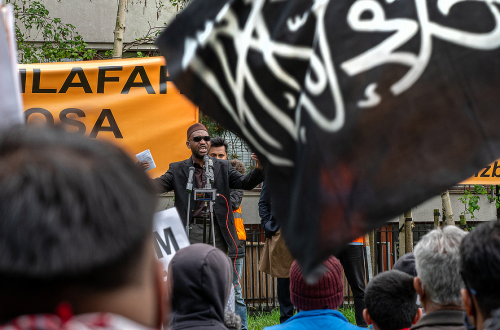This is a cross-post by Jacobinism
In August 2010, Time magazine responded to the leaking of classified documents pertaining to the war in Afghanistan with a gruesome cover story reminding its readers of the misogyny and sadism of the Taliban. It featured the face of a young Afghan girl whose nose and ears had been cut off by the Taliban after she fled abusive in-laws. The caption read: “What Happens If We Leave Afghanistan”.
In the Guardian, a Cambridge-based academic named Priyamvada Gopal declared herself scandalised. “Misogynist violence is unacceptable,” she allowed, “but….”
…we must also be concerned by the continued insistence that the complexities of war, occupation and reality itself can be reduced to bedtime stories. Consultation with child psychologists apparently preceded Time’s decision to run the image, but the magazine decided that in the end it was more important for children (and us) to understand that “bad things do happen to people” and we must feel sorry for them.
Gopal, it seems, felt emotionally blackmailed by Time’s stark representation of one of Afghanistan’s most terrible realities. I feel I ought to assume that some part of her understands that pre-medieval religious codes mandating the mutilation of 18-year olds are completely deplorable. But nowhere in her article could she bring herself to actually say this. For to have done so, in Gopal’s mind, would have been to endorse a neo-colonialist narrative which invokes women’s rights only to denigrate the “other” and to drum up support for Imperialist wars of aggression.
So, instead, she buried her concerns about the spiteful disfigurement of Afghan girls and women, and instead mounted a furious defence of Afghan culture and an equally furious denunciation of the West’s alleged hypocrisy. Time’s use of such an emotive image, she argued, was simply another instance of the West egregiously misrepresenting the Global South as inferior and backward:
Formulaic narratives are populated by tireless Western humanitarians, sex-crazed polygamous paedophiles (most Afghan men) and burqa-clad “child-women” who are broken in body and spirit or have just enough doughtiness to be scripted into a triumphal Hollywood narrative.
Apparently by now oblivious to the fact that the young girl in question was – and still is – a survivor of real and horrific male violence, Gopal dismissed her image with this:
The mutilated Afghan woman ultimately fills a symbolic void where there should be ideas for real change.
…before concluding:
[The affluent West’s] bankrupt version of modernity has little to offer Afghans other than bikini waxes and Oprah-imitators. A radical people’s modernity is called for – and not only for the embattled denizens of Afghanistan.
And there it is. Free societies are reduced to bikini lines and talk shows and theocratic barbarism is defended with demands for context and nuance and with accusations of intolerance. Meanwhile, what this proposed “radical people’s modernity” consists of or how Gopal’s “ideas for real change” were to be attained remains a mystery…
Three years later, we find Gopal on the Rationalist Association website (of all places) fretting about the controversy surrounding gender segregation of public meetings organised by Islamists.
Please read the rest of Jacobin’s post here. And it’s also worth noting that these points have become still more topical following this disappointing post by Laurie Penny.


